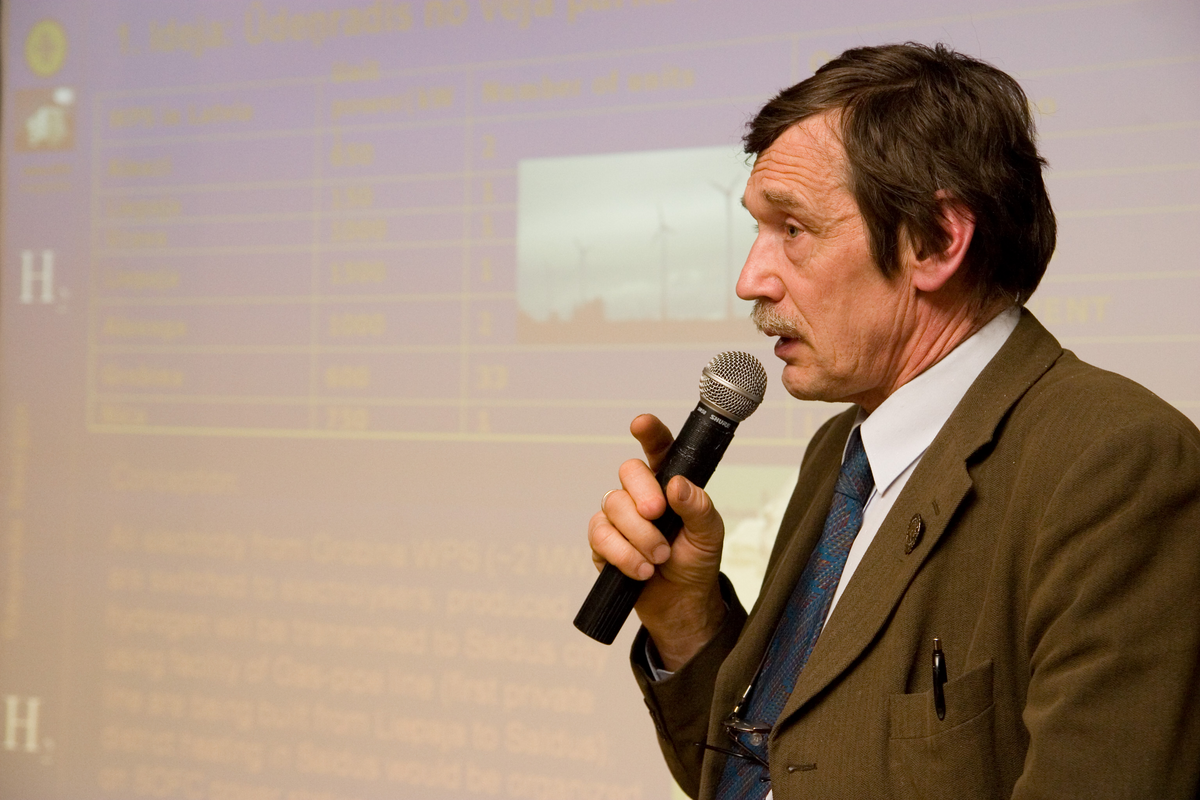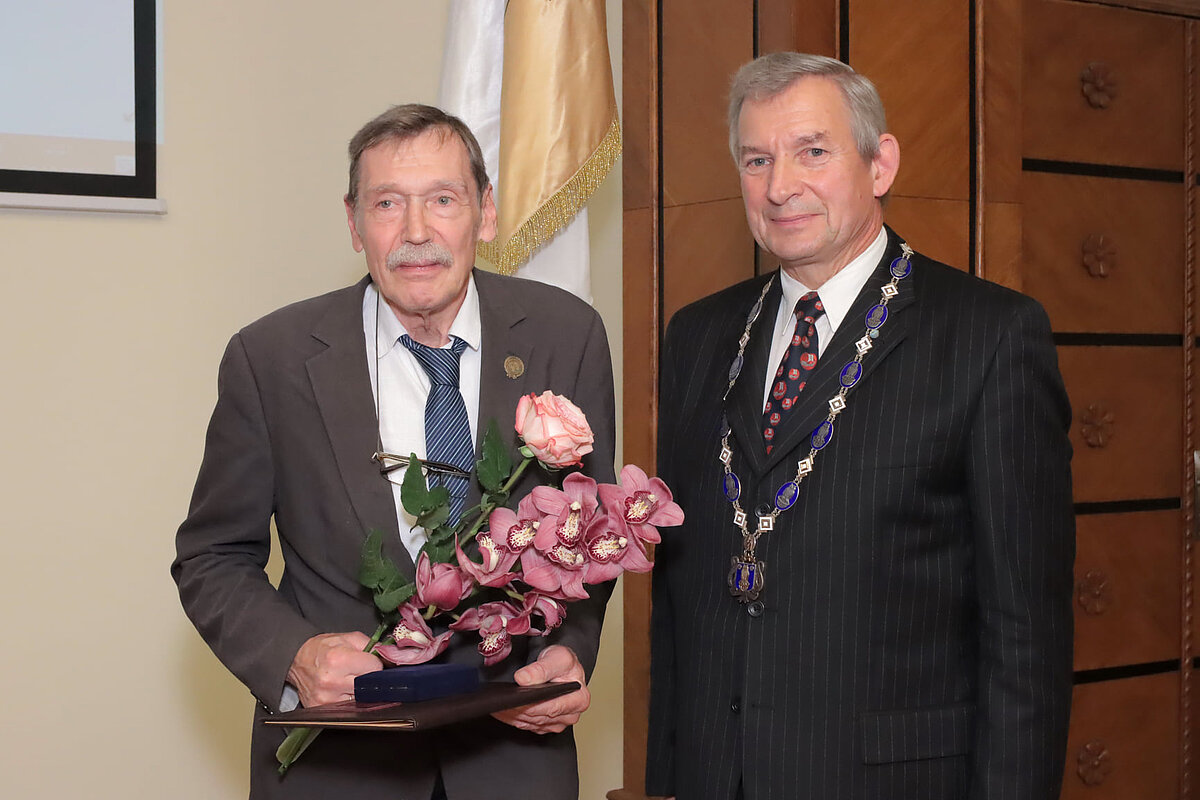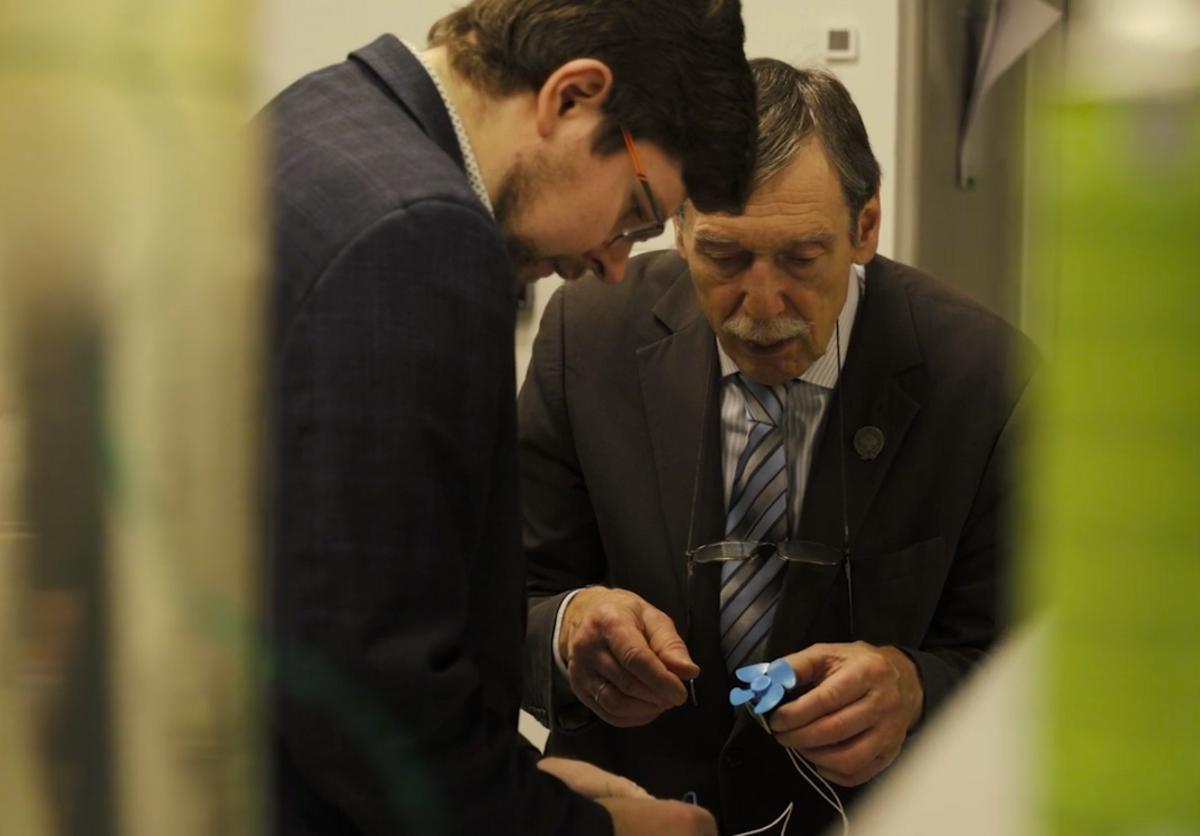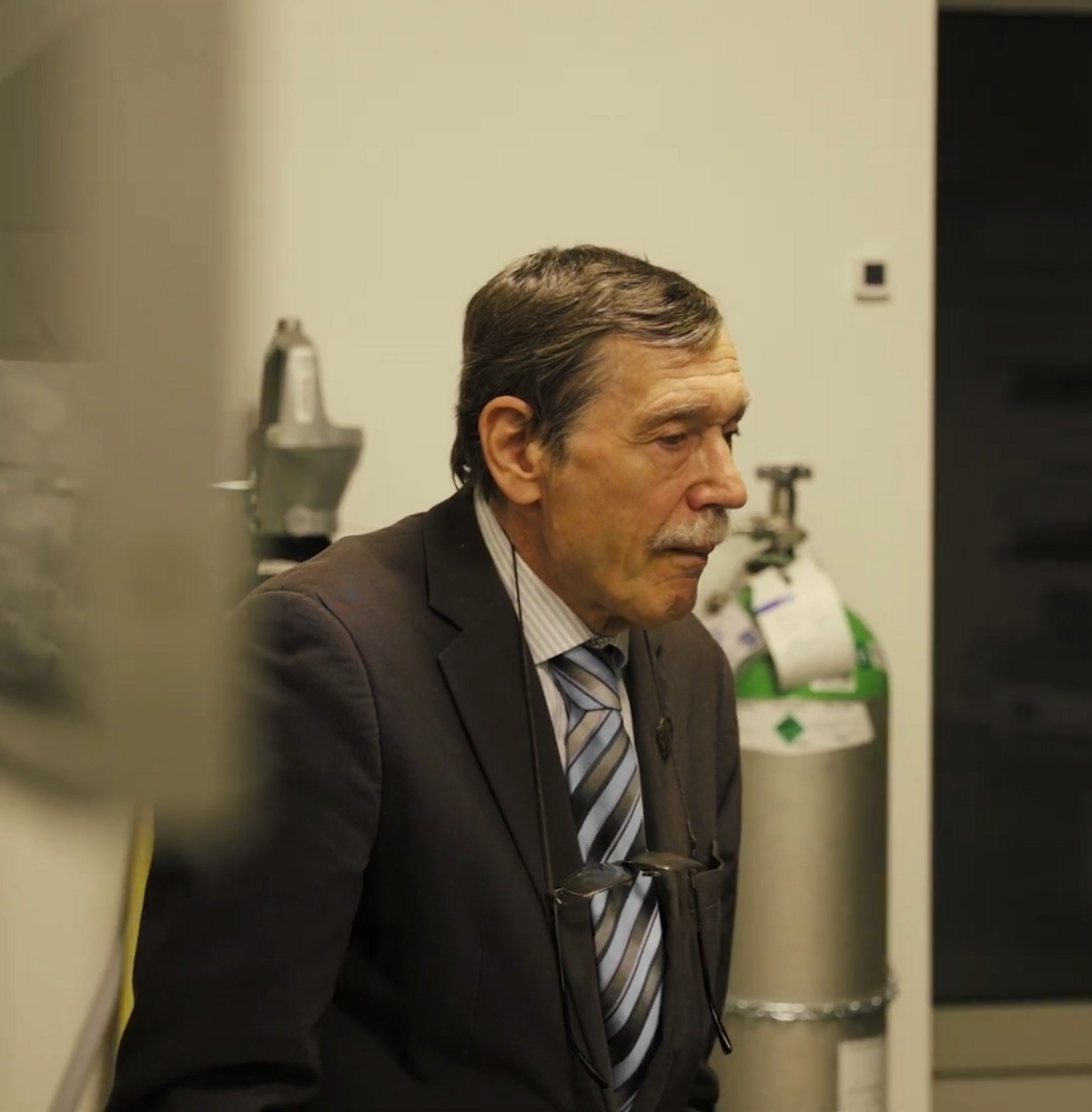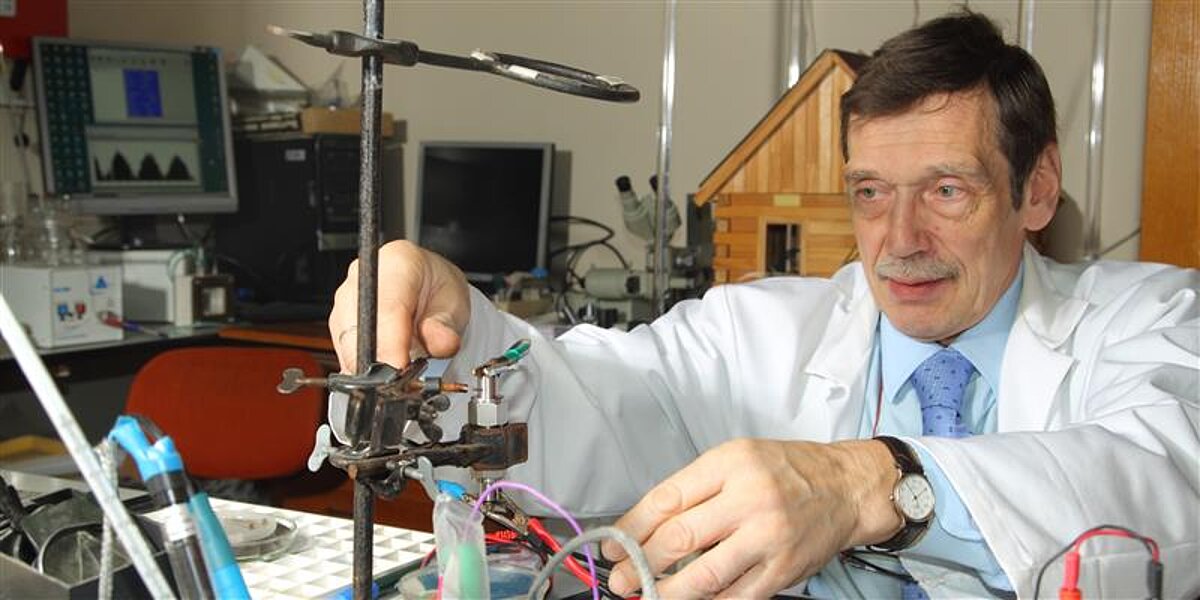
Dr. phys. Jānis Kleperis in Our Memories
At the end of July, long-time researcher of the Institute of Solid State Physics, University of Latvia, Jānis Kleperis, passed away. “A true workhorse, always available, always helpful and encouraging, as well as an enthusiast of music, poetry, folklore, and photography,” he’s remembered by the team of our institute’s Laboratory of Energy Materials. In his memory, we compiled recollections from Jānis’ colleagues and companions to honour an outstanding scientist and just a good man.
Gints Kučinskis:
Jānis was my first direct supervisor, helping me define the topic of my bachelor’s thesis, and we remained in touch even during the years I worked in Germany. I remember Jānis often worked long hours and genuinely cared about both the laboratory and the people working in it. His passion, warmth, and humanity will remain in my memory forever.
Ainārs Knoks:
Jānis’ passion was present from the very beginning of the ISSP, including literally building it with his own hands – here he invested his knowledge, skills, and heart.
I met Jānis during my bachelor’s studies; he actively offered opportunities for growth, work, and development in different fields. He always thought about the younger generation, about other people, the institute, and Latvia more than about himself. Extremely knowledgeable, helpful, and approachable – he never refused to help and even organized excursions and events to promote ISSP UL's work and science at a time when such practices weren’t common. School excursions, Shadow days, Researchers’ Nights – things we now consider a routine part of our work were initiated thanks to him.
Jānis was a pioneer of hydrogen energy in Latvia and the Baltics, therefore, much could be said about his passion for creating new opportunities and knowledge. But his desire and ability to highlight Latvian spirit and national identity, both at ISSP UL and in the lab, has always been an admirably valuable quality.
One Christmas, Jānis organized a small masked procession (as per Latvian tradition), folk song singing, and even a little performance involving representatives from several labs.
Pēteris Lesničenoks:
Jānis Kleperis welcomed me into the Hydrogen Materials Laboratory at the Institute of Solid State Physics as a first-year materials science student to conduct hydrogen storage research during my summer internship in 2011. Before long, I was already involved in the development of research projects and soon travelled alone to my first conference – EMRS in Strasbourg. I already knew then that I wanted to develop my academic work in the Hydrogen Laboratory and be part of this team.
Jānis was not only a scientific father to me but to our entire laboratory. The care he showed us – in both experiments and life's challenges – will always remain in our memories.
He instilled in me both scientific curiosity and independence, while also ensuring the social and communal well-being of our laboratory. Thanks to Jānis and his family, we were even able to organize beautiful weddings for several young enthusiasts in the lab. Even this past Christmas, Jānis so fondly remembered everyone. Many thanks for your boundless warmth of heart!
Līga Grīnberga:
I started working at ISSP UL back in 1999, when a coursemate, who already worked there, asked if I’d like to join Jānis Kleperis’ lab and work with an “electronic nose.” I agreed – the name sounded as intriguing as anything could in the field of physics. When I arrived, I met Jānis. Whatever I had imagined a physics PhD supervisor would be, it wasn't what I saw – a friendly-looking, smiling man who looked genuinely happy to see me. We chatted, and I felt like I had come to visit a kind godfather – calm, always ready to help and explain.
Jānis’ favourite saying in the lab was: “Play around with it, see what happens.” That really surprised me – isn’t this a scientific lab? But that’s how it was – you had to do it yourself, think for yourself. Still, Jānis always found time to explain if I didn’t understand something. He quickly started sending me to conferences and schools to learn. This often confused foreigners – how can a bachelor’s/master’s student travel to conferences? But that was Jānis! After our "electronic nose" research, we got a project on hydrogen storage – again, something new and unknown, but he said: go for it.
I was also amazed by Jānis’ many talents – musician, artist, poet, yet always a family man, with a spark in his eyes and heart. How could so much energy exist in such a calm person? That’s how I will remember Jānis – bright and caring, always present and full of energy. Thank you, Jānis, for letting me be part of your “extended” family.
The older generation at the institute also remembers several amusing escapades that reflect Jānis’ vivid character and warm relationships with those around him.
Gunārs Bajārs:
As an exceptional scientist, Jānis was also a great experimenter. In the early 1980s, we were studying electrochromic materials. Together with colleague Juris Lagzdons, Jānis worked with a Kip’s apparatus to generate hydrogen by reacting zinc with hydrochloric acid. They decided to test whether the hydrogen was coming out. Juris, a heavy smoker, held his cigarette to the outlet of the apparatus (back then, smoking restrictions weren’t as strict). The explosion was massive. Glass flew across the lab. There were injuries, but fortunately, nothing major or lasting. Someone up there must’ve been watching over us! I must add – Jānis’ contributions to the research and explanation of electrochromic reactions and colour transitions remain the most significant in the lab.
Laimons Jēkabsons:
Jānis and I had many adventures – kayaking with a collapsible boat, photography club sessions with Gunārs Birkmanis at VEF, hikes in the Khibiny Mountains, even a climb on Mount Elbrus. Here are two stories from our many activities beyond science:
Persistence to the point of stubbornness
One spring, we decided to kayak the Amata River – not just the usual stretch from Amatciems to Gauja, but starting all the way back from Skujene. In the 1970s, there was a direct bus from Riga to Skujene, and we had a foldable kayak with a heavy rubberized skin – it weighed about 40 kg, plus our gear, so even while on land our work was cut out for us.
We assembled the kayak and set off on what seemed a “ditch” of a river (we wouldn't call it that for long). We didn’t realize that the forests near Skujene were still clinging to winter. As our kayak reached the forest edge, there were ice plates along the shore, which we had our fun with tapping with paddles. Then we saw a full ice sheet across the stream. Still, the middle was cracked and could be fought through, so we hoped that once Amata got faster, there’d be no more ice.
We bravedheveral icy barriers, but soon we reached a point deep in the old forest where a serious ice cap spanned the stream – too thick to paddle through, too thin to walk on (except maybe for rabbits).
Going back upstream wasn’t an option. So, we dragged ourselves ashore, disassembled the kayak, packed it up, and searched for a forest path leading to a bus stop. At first, this wasn’t the main challenge as we had to scramble up a snowy hill.
These moments have their beauty – no need to think or worry. We’re country boys; your inner compass just “finds” the way. We made it to the only and last bus.
Purposeful resolve
Another spring paddling story – this time right by the institute. From the wide window of the then photo lab (room 219), I was watching the Daugava river and saw a large chunk of ice drifting along the stream with a man on it, carefully observing the shore. He didn’t look like he was happy with the situation.
By some divine coincidence, our old Amata kayak was near the freight elevator. I don’t remember the details, but Jānis and I grabbed the paddles, loaded the boat, and carried it down the stairs.
We had no rescue training or experience. The situation wasn’t catastrophic, but there was a risk the current could take the ice to the middle of the river.
The man in the coat and rubber boots really did want to get off the ice. He climbed onto the front of the kayak (basically into Jānis’ lap), and I just had to steer us to shore.
In science, achievements and innovation often measure a person's value. But people like Jānis Kleperis remind us how deeply important human values truly are. We will miss him and long remember him.
Video clip about the Latvenergo Annual Award 2022 winner Jānis Kleperis

